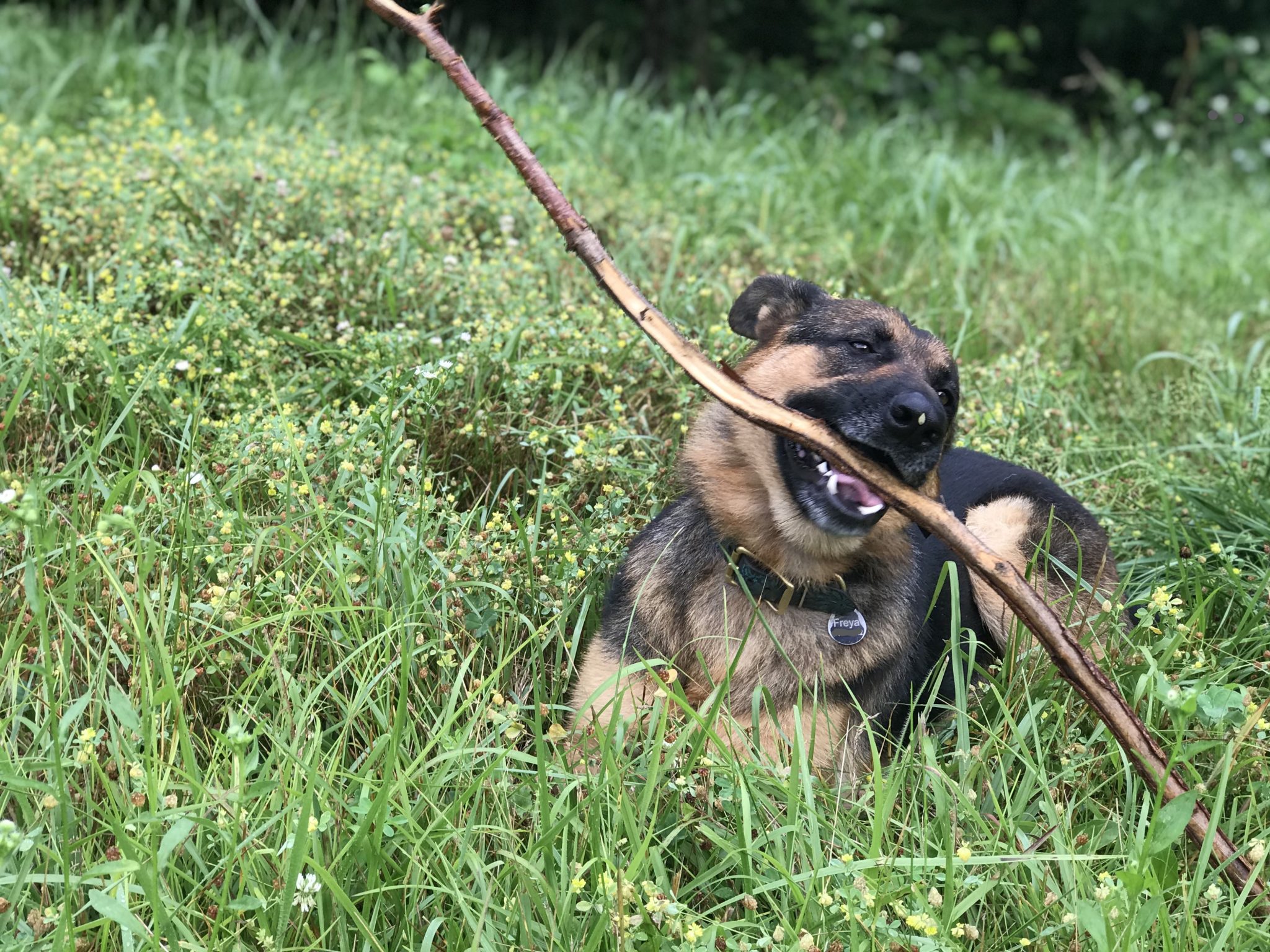
I was one of the thousands who adopted a dog during the pandemic. Our new dog, Freya, is an intelligent, sweet and motivated young German Shepherd mix. We had a bit of a bumpy ride integrating her into the family back in March 2020, so I had already been working with a local trainer on obedience when I saw “The Art of Training Your Dog, How to Gently Teach Good Behavior Using an E-Collar” by the Monks of New Skete and Marc Goldberg in our new books collection and knew that I wanted to check it out.
I’ve never had a German Shepherd before, but I immediately saw why they were some of the first service dogs. Our dog’s intelligence is matched only by her desire to help me with whatever it is I’m doing, any behavior or training problems are a reflection of her drive and my lack of skill as a dog trainer.
I found this new book by the Monks of New Skete to be helpful and practical. The authors thoroughly explain their philosophy, which is founded on working with the dogs’ natural drives. The training exercises are described in detail, including the different reactions your dog my have and how you should respond. As I started each new exercise or advanced to the next step, I felt confident that I understood what I needed to do for us to be successful. The best part of their method is that it really worked for us.
The techniques were easy for me to implement. Previously, I’d had a hard time advancing our training, because I felt like it required a level of assertiveness, that I hadn’t been able to achieve. I’m not exactly a push over, I grew up with horses and dogs and can hold my own, but I wasn’t comfortable jerking really hard on my dog’s leash to get her attention. The Monks’ training approach puts the responsibility on the dog to stay with you and naturally motivates them to focus on you, rather than you having to try to keep your dog’s focus. It’s a subtle shift, for sure, but it made a big difference for me. With a little time and no heartache our ‘heel’ went from from so-so to so awesome.
This book specifically addresses using an electronic collar or e-collar in a gentle, compassionate way that works with your dog’s natural instincts. We live on a farm with horses, and surrounded by wildlife. Freya learned to come when called very quickly and has a pretty reliable ‘recall,’ but she also has a strong prey drive. The first time she chased a deer, she was out of sight in a few seconds and didn’t return for six hours. Did I say she’s fast? She can run really fast. I knew I needed a tool to extend my reach. My local trainer has a good program for using an e-collar, but I didn’t feel one hundred percent comfortable using it. After reading and working through “The Art of Training Your Dog,” I feel much better about using the collar and my dog’s responses have improved, too.
Even if you don’t use an e-collar, the Monks of New Skete have more books that are worth considering: “How to Be Your Dog’s Best Friend, the Classic Training Manual for Dog Owners,” is exactly that: a classic book on training your dog with same pragmatic and compassionate style that I found in “The Art of Training Your Dog.” If you have a puppy or or thinking about getting a puppy, “The Art of Raising a Puppy,” is a must read. The monks have been breeding and raising German Shepherds since the ’70s and their thoughtful experience is shared here.
Other titles include:
- “Let Dogs be Dogs, Understanding Canine Nature and Mastering the Art of Living with Your Dog”
- “Divine Canine, the Monks Way to a Happy Obedient Dog”
- “In the Spirit of Happiness”
Image credit: MaggieM’s dog, Freya, playing at the farm. photo credit: Margaret Maginness


